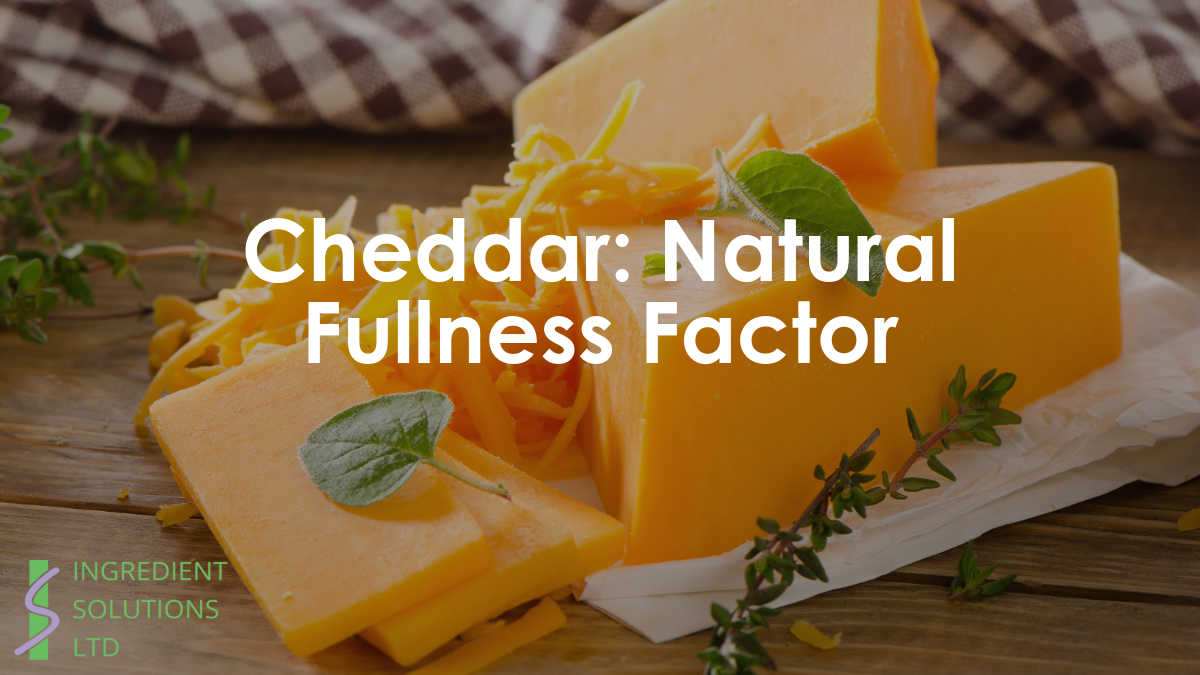New Research Unlocks Satiety Potential in Irish Cheddar
One of the biggest challenges facing the food industry today is meeting consumer demand for healthier products that support weight management, without compromising on taste or convenience. A recent study led by Dr. Linda Giblin and colleagues at Teagasc and University College Dublin has revealed that cheddar cheese – one of the world’s most popular dairy products – could have a surprising role to play in satiety, or the feeling of fullness.

Why Satiety Matters in Food Innovation
For food producers and retailers, satiety is more than a nutrition buzzword. Foods that naturally enhance feelings of fullness can help consumers control portion sizes, reduce overall energy intake, and support long-term weight management. With obesity rates rising globally (8–24% of European men and 10–35% of women are now classified as obese), demand for satiety-enhancing products is growing. This opens commercial opportunities for snacks, dairy products, and functional foods that can offer scientifically validated health benefits.
The Research at a Glance
The project, funded by Enterprise Ireland (FHI-2, Project 6792) and conducted between 2016–2018, investigated the effects of Irish cheddar cheese on satiety hormones.
Key findings include:
- Cheddar cheese stimulates satiety hormones
Nine out of ten Irish cheddar samples tested significantly increased secretion of GLP-1, a hormone linked to fullness, in laboratory gut cell models. - Cheese versus other snacks
In a controlled human trial with 32 healthy male volunteers, those who ate cheddar as a snack had higher GLP-1 levels in their blood compared to those who consumed calorie-matched egg or scone snacks. - Ripening matters
The most potent sample – cheddar aged for 8 months – increased GLP-1 production by an impressive 50-fold in cell studies. - Animal studies support the effect
Mice fed the most bioactive cheese ate less food than those given a control cheese, supporting the satiety findings.
Importantly, the effect was not linked to simple amino acid content or flavour compounds, pointing instead to bioactive peptides produced during cheese ripening.
What This Means for the Food Business
The implications of this research are significant:
- Cheese in the snack sector
Traditionally seen as indulgent, cheese could be repositioned as a functional satiety snack. This creates opportunities for manufacturers to market cheese more directly to health-conscious consumers. - Value-added dairy innovation
By highlighting natural satiety benefits, Irish and international cheese producers can differentiate products in a competitive marketplace. - Consumer trust through science
Marketing backed by peer-reviewed studies, like this one, can strengthen consumer trust and appeal to health professionals recommending dietary strategies for weight management.
Challenges and Future Opportunities
The study also identified that while GLP-1 responses were higher after cheese consumption, participants did not necessarily report lower appetite or eat less at the next meal. This suggests that enteric protection technologies (e.g., encapsulation to protect bioactive peptides during digestion) could help maximise satiety effects in finished products6792-FHI-Cheese-for-Satiety-Lin….
As the food industry continues to innovate in functional and health-focused categories, further work on protecting and enhancing these bioactives could pave the way for next-generation dairy-based satiety products.
About the Research
This research was carried out by Teagasc Food Research Centre in collaboration with University College Dublin, as part of the FHI-2 programme (Enterprise Ireland project 6792). Principal Investigator: Dr. Linda Giblin.
View the original whitepaper: Satiety; can cheese play a role?
Final Thoughts
For food business professionals, this research reinforces the growing value of science-led product development. With consumer demand for healthier snacks at an all-time high, cheddar cheese may soon find itself positioned not just as a traditional favourite, but as a functional food for fullness.












